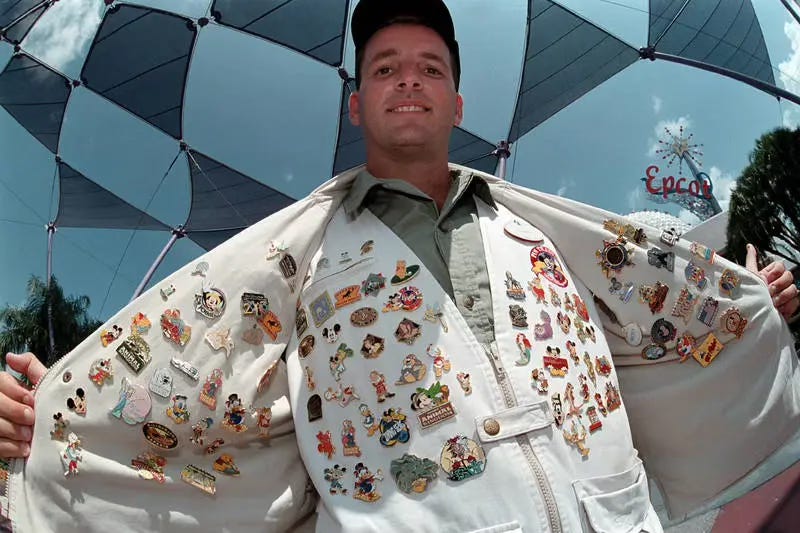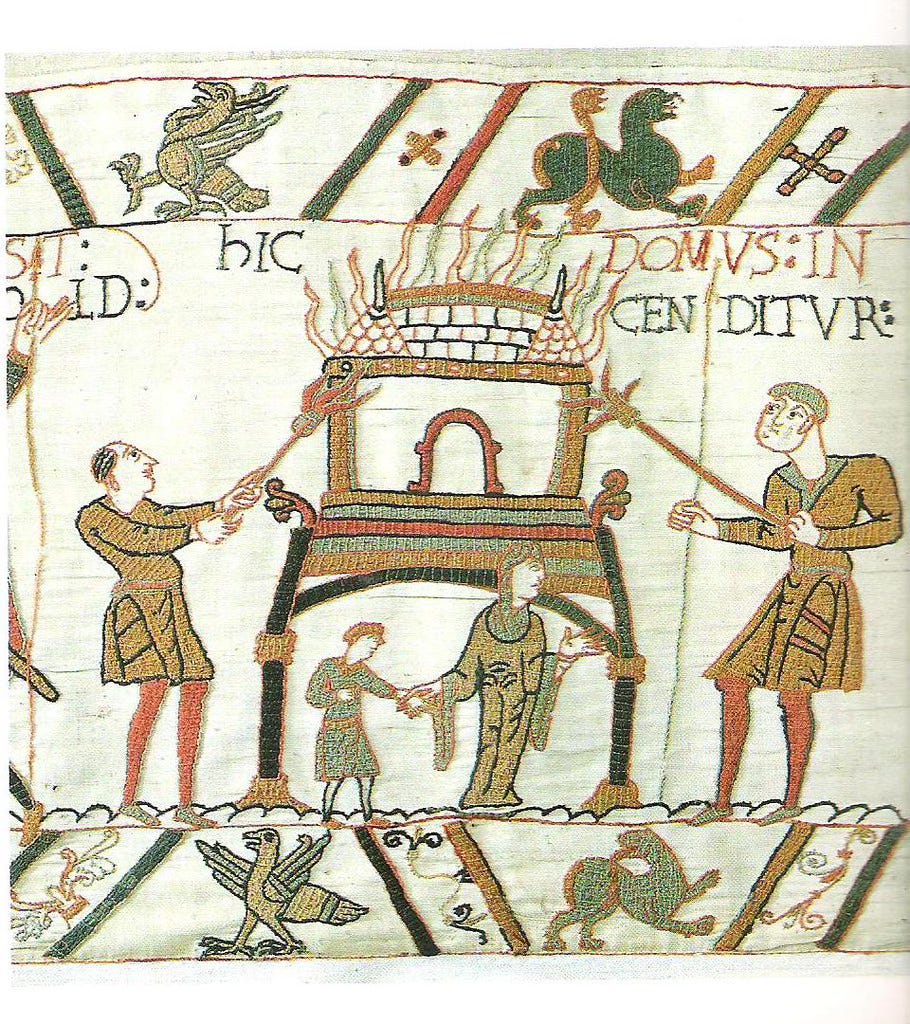Consumer Culture's Clash with Christianity
Occasionally I find myself scrolling through YouTube shorts. This is an algorithm driven decision, since I have very little interest in most of the videos that YouTube decides to show me, but the dopamine hit that I receive from watching a short, often bright-colored and entertaining video is strong enough to keep me coming back when I have downtime. A few weeks ago, I saw a strange kind of video. Over the course of a minute, a bright-eyed, brightly dressed woman smiling enthusiastically behind a face of soft makeup, and her equally friendly husband opened a series of plastic packets purchased at Disneyland. They were questing for the “chaser,” a term I was unfamiliar with.
The bags, when opened, revealed two smaller bags, also of plastic. Inside were enamel pins featuring various Disney characters. They were, the woman and her smiling husband explained to the camera, part of a set. They want to complete the whole set, but rather than buying each pin individually, the mystery packs require the consumer to purchase them sight-unseen, then open them, hoping to get pins they don’t have. The pins are not printed in equal numbers. Some are more rare than others, the rarest of the set, I learned, is called the “chaser,” and this is often what is required to complete the set. The woman and her husband frown at the camera, in a friendly and congenial fashion. How disappointing! The packs they opened, while containing a few new pins, didn’t yield the complete set. The solution is obvious: they will have to buy more
We live in an age of abundance. In my house I have nine pairs of pants, and many more skirts. I have clothes reserved for wearing at Renaissance festivals. I have dresses for spring, and summer, and autumn, and winter. I have shoes in black and brown and blue. I have socks for working out, and socks for wearing to work. I have multiple chargers for each device. I have neat collections of household supplies: deodorant, cleaning spray, electric toothbrush heads, back up bottles of shampoo, razors, face cleanser, body oil, mouth wash. I have four different kinds of headphones. I have a work computer and a personal computer, I have a work phone and a personal phone, I have two couches and four chairs and a very large number of plates and cups, some of which are ornamental and not to be eaten from. I have matching lamps and side tables and ornamental chairs you aren’t supposed to sit on. I have tote bags and handbags and blankets for winter and summer. I have dry food set aside, just in case. I have bookshelves filled with books, some of which I have read, some of which I am going to read. I have jewelry: costume jewelry, and real, gold and pearls and plated. I own the recently re-released Lenox Spice Village collection, which, I might add has proven my best financial investment to date. I have multiple mouse pads. I have so much more that I cannot begin to list.
Offer my life to most people in human history, and they would be shocked and appalled at the luxury and waste. We have very few examples of clothing, even from as recently as two hundred years ago, because clothing was difficult to produce and too costly to waste. Most people owned only a few pieces, which they cared for and tended. If people received an inheritance from their parents, it might be in the form of a bed. Furniture had to be crafted by hand and was expensive, you did not waste it. Drive by any college town at this time of year and you will see sofas, chairs, mattresses, tables, televisions, and other assorted detritus of the academic year left out on the side of the road, discarded by its owner.
After I watched one video of the woman and her husband opening mystery packs of pins at the trademarked Happiest Place on Earth (a quick search has shown me can go for $8-30,) the YouTube algorithm decided that I should be shown more of this content. The woman and her husband appear, competing to see who can find a complete set of princess slippers, or mouse ears, or tea cups. They open more bags. They groan in despair or shout in joy, depending on the outcome of their gamble. They trade their extra pins with people visiting the parks, who occasionally recognize them as celebrities and squeal. They thank their sponsors sometimes for providing them with bags to open.
It is not just this woman and her husband who make this content. There are a seemingly limitless number of people who film themselves opening brightly colored bags in search of completing a collection. One woman has a room filled floor to ceiling with pins.
This is a subculture alien to me, since I was raised without Disney and largely exist outside of its all-consuming sphere. Because of this perspective, I find it easy to feel a smug superiority to these smiling anodyne people, displaying their purchases to the camera. I might spend my money on Bayeux Tapestry cushions or Latin books, but at least I do not waste it on scraps of enamel printed by Big Mouse.
I found I could not stop watching the videos. I spent the better part of an hour scrolling through them, amazed by the variety, the seemingly endless offerings. Mary Poppins, Haunted Mansion, Star Wars, princesses, rides, Kwanza, Christmas, anniversary celebrations, all of them are immortalized and made available to you, either in pin or in film form.
The sin of gluttony is underemphasized in our culture of excess. In my mind, As a child, I equated it with the (fictitious) story of ancient Romans eating so much that they had to make themselves throw up so they could eat again. I did not do that, so I could not be gluttonous. But the overconsumption in my life comes in many forms. I watch too many YouTube videos; I buy more than I need. The convenience of ordering online can outweigh the consideration of whether or not I purchase something worthwhile. Gluttony inspires and is inspired by covetousness; wanting what others has induces you to procure it, even if it is not beneficial.
As a culture we have not yet begun to reckon with the danger that excess can bring us. Comfortable people cannot easily be roused to virtue. Proverbs reminds us that If you find honey, eat just enough— too much of it, and you will vomit. We are sick with luxury, we have so much that we waste, and view our wasting as a sign of wealth. How can you strive for virtue in your own house, if it is filled with little false gods, purchased online on sale and stored up in ample barns so we can eat, drink, and be merry?
We are quick to denounce the sins of adultery and idolatry, but we often ignore the two commands against covetousness because the sins can feel so insignificant. I’m not going to murder my neighbor because she has a new dress or a fancy car. I’ll just get one myself. Our consumer driven culture encourages us to look elsewhere, but the Bible is clear that there is no contentment, no happiness, outside of Christ.





Great Article! Very helpful to think about my wastes.
I am working toward slaying this consumeristic tendency in my family, it’s tough, but a worth while journey to take